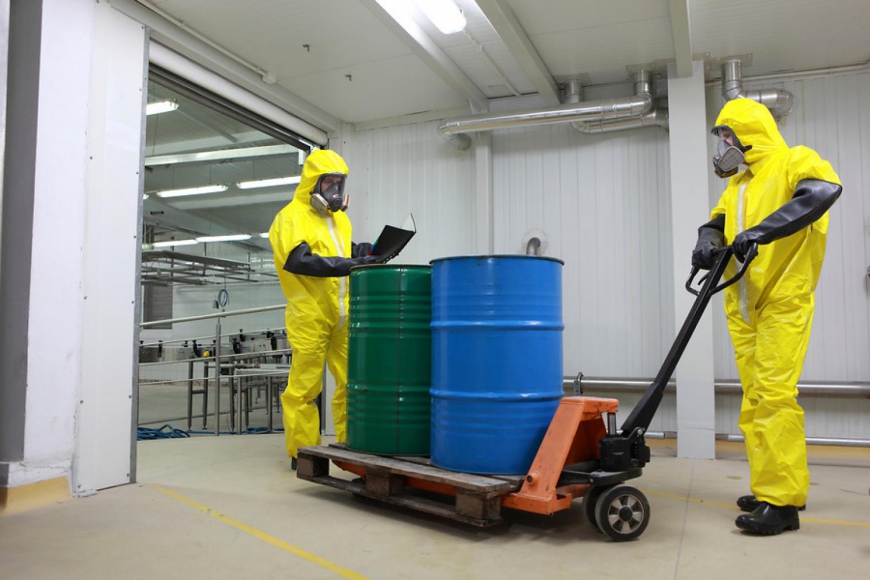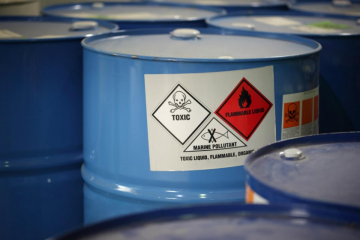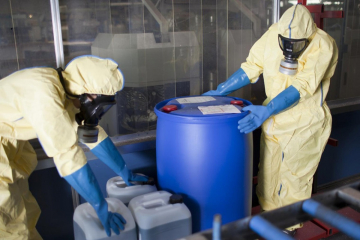Tier II Reporting (SARA Section 311/312) for Reporting Year 2024 began January 1, 2025, and for most states is due by March 1st to the State Emergency Response Commission (SERC), Local Emergency Planning Committee (LEPC), and local fire department. Tier II reports are used by fire departments in case of an emergency, so the responding authorities know the potential chemicals and hazards that could be present onsite.
Tier II reports detail materials stored onsite over a certain quantity threshold that the city, state, and/or federal regulations have determined. These reports typically include facility contact information, chemical name, storage information, and the hazards associated with the chemical. For companies with facilities in multiple locations, HOW you report the information can vary greatly depending on your local regulating authorities (states, LEPCs, and fire departments). Some have their own state-specific electronic database, others use E-Plan, others require you to email the info into their Tier2Submit software, etc. The EPA’s State Tier II Reporting Requirements webpage is a valuable tool that outlines state-specific requirements.
Tier II reports are required when facilities trigger their state’s reporting thresholds for materials which have a physical or health hazard. The federal reporting thresholds are 10,000 pounds for hazardous chemicals and 500 pounds or the Threshold Planning Quantity (TPQ), whichever is less, for extremely hazardous substances. However, many states or even local agencies have lower reporting thresholds, so you should check with your state reporting requirements. Some agencies (ex. NYC) have reporting thresholds as low as “greater than 0 pounds” for certain chemicals. If you aren’t sure if your material contains an extremely hazardous substance, check the ingredient list against the List of Lists, Section 302.
Even if your facility doesn’t maintain the traditional chemical storage, Tier II reporting may still apply. If you have lead-acid batteries or emergency generators onsite, you can quickly exceed the reporting thresholds. For example, if you have approximately 1,400-gallons of diesel onsite, you would exceed the 10,000-pound threshold and would therefore need to report.
Lithium ion batteries can be subject to Tier II reporting thresholds, as well. However, some batteries may be exempt from reporting under the Consumer Product Exemption and the Resource Conservation and Recovery Act (RCRA). These are the batteries that are used for personal, family, or household purposes, or are present in the same form and concentration as a product packaged for distribution and use for the general public. End-of-life lithium batteries may be exempt from Tier II reporting if the batteries meet the definition of RCRA hazardous waste and are subject to RCRA regulations.
If the facility stores chemicals above the Threshold Planning Quantity (SARA Section 302), additional requirements may be required. This includes designating a facility representative to participate in the local emergency planning process as a facility emergency coordinator and notifying the LEPC of relevant changes within 30 days after the changes have occurred.
Here are a few helpful tips for completing your Tier II Report / HMBP this year:
- Get a jump start on reporting – don’t wait until the last week of February to start.
- Review your state’s reporting requirements to determine if anything has changed.
- Determine which chemicals will need to be reported, then review those specific SDS’s to determine the hazards (See Section 2.0 of the SDS).
- Since Toxic Release Inventory (TRI) reporting uses some of the same information, complete your TRI evaluation at the same time.
- If you determine that you do not exceed the reporting thresholds, maintain the documentation that shows you do not need to report.
- Remember to include ALL lead-acid batteries in your reporting including fork trucks, UPS Systems, emergency generators and/or fire pumps in your evaluation and reporting.
- Maintain a copy of the report and paid invoice (if applicable) as proof of your submission.
- Materials that are present in the same form and concentration as a product packaged for distribution and use for the general public may be exempt from Tier II Reporting.
- Even if the material was only present over the reporting threshold for a day, a Tier II report must be filed.
- If the facility shut down during the course of 2024, don't forget that a Tier II report must still be filed if chemicals were stored onsite over the reporting threshold.
Contact our waste and materials management team today to help with your Tier II reporting.
Want more news and insights like this?
Sign up for our monthly e-newsletter, The New Leaf. Our goal is to keep you updated, educated and even a bit entertained as it relates to all things EHS and sustainability.
Get e-NewsletterHave any questions?
Contact us to discuss your environment, health, safety, and sustainability needs today.







